Ever wondered what the must-read Environmental books are? Here is our take.
Are you taking college-level classes about the environment? Or, do you want to expand your mind and knowledge of the world around you?
Our list of the best books for environmental students will help you learn about environmental biology, global warming, and other environmental challenges.
This list helps researchers tucked away in their daily grind develop their next breakthrough idea.
For a layperson, this helps you become a well-read lifetime learner.
Let’s start!
Table of Contents
Best Environmental Science Books
- Sand County Almanac [Get the book]
- How to Be a Good Creature [Get the book]
- Where the Wild Things Were [Get the book]
- The Two-Mile Time Machine [Get the book]
- The Balance of Nature [Get the book]
- The Winds of Change [Get the book]
- Braiding Sweetgrass [Get the book]
- Choked [Get the book]
- Falter [Get the book]
- Inconspicuous Consumption [Get the book]
- No One Is Too Small To Make A Difference [Get the book]
- Sustainability Made Simple [Get the book]
- There Is No Planet B [Get the book]
- Are We Smart Enough to Know How Smart Animals Are? [Get the book]
- Don’t Even Think About It [Get the book]
Sand County Almanac by Aldo Leopold
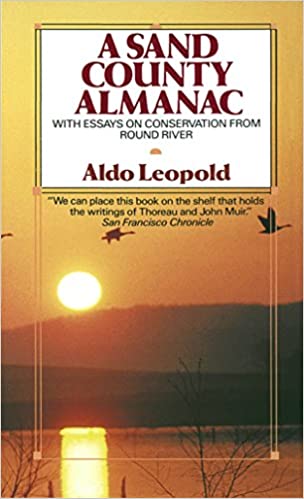
Intro-Why you should read it
Sand Almanac will help you think like a scientist and see the natural world in new ways that enrich and deepen your relationship with the creatures, plants, and landscapes.
Summary-What this book is about
This book covers what a conservation biology degree is, how you can use ecology in your life, and the importance of understanding ecology on a deeper level.
Sand Almanac explores deserts, coastlines, mountains, and the entire American landscape in an easy-to-understand way so that anybody can apply them to life.
Key Takeaways
- When you kill off local animals, they no longer have a part in keeping the ecosystem balanced.
- People should not try to control nature; they should live in harmony. The land can provide for humans without being totally under their control.
- Humans should respect nature and protect living things that are not directly useful to us.
How to Be a Good Creature: A Memoir in Thirteen Animals by Sy Montgomery
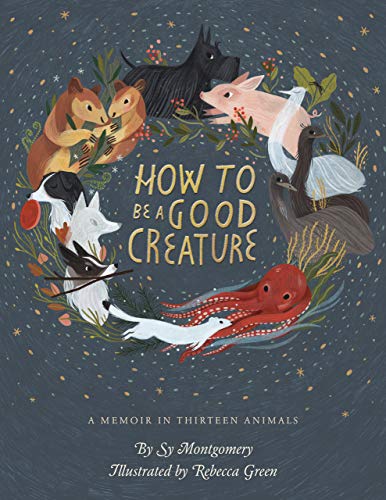
Intro-Why you should read it
This beautiful, informative book will appeal to anyone who loves animals or nature.
Sy Montgomery’s writing is elegant, funny, and full of warmth. She captures the essence of her subjects, and her accounts are filled with wonder, idealism, and respect.
Summary-What this book is about
How to Be a Good Creature is an illuminating story of 13 animals who have profoundly affected the author’s life and shaped her basic understanding of nature.
These fascinating accounts reveal what it really means to be a dog, a pig, a cat, or even an octopus through a personal lens.
Key Takeaways
- The author delves into the world of animals, highlighting the important lessons we can learn from these amazing creatures.
- The book is short but with lovely illustrations and exciting content.
- The physical quality is good, and the print is visible to everyone.
Where the Wild Things Were: Life, Death, and Ecological Wreckage in a Land of Vanishing Predators by William Stolzenburg
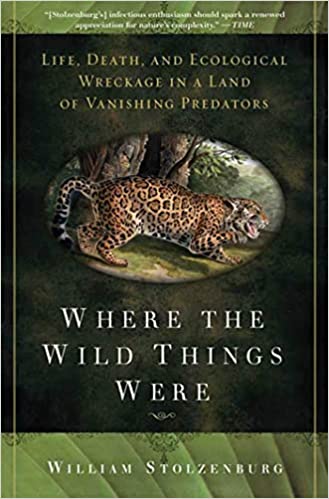
Intro-Why you should read it
This book explains how connected our worlds really are–and how profoundly we need to be informed about human-caused climate change.
The author weaves in real stories of his childhood and travels with those of animals on the move.
Stolzenburg’s writing style is conversational and engaging. You will soon feel as though you know him personally.
Summary-What this book is about
Stolzenburg defines key conservation terms (such as niche and endangered) while providing an overview of biogeographic scales.
He offers an interesting perspective on connectivity by suggesting that we humans are the “definitively invasive species,” most frequently wreaking havoc when we intrude upon the lands of other plants and animals.
Key Takeaways
- This book offers readers a unique perspective into the world through the lens of a science journalist-William Stolzenburg.
- We need all animals in the ecosystem. The author takes a look at the devastating effects of ecological wreckage.
The Two-Mile Time Machine: Ice Cores, Abrupt Climate Change, and Our Future by Richard Alley
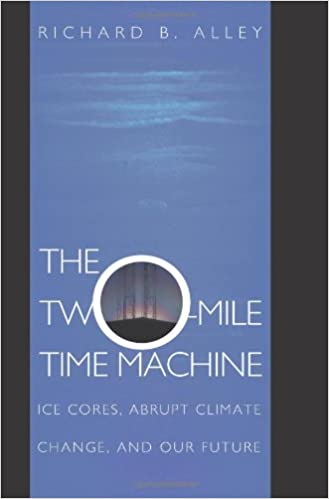
Intro-Why you should read it
The Two-Mile Time Machine is a new way of understanding global climate change—and what might be in store for our future.
Summary-What this book is about
In The Two-Mile Time Machine, Richard Alley reveals how our understanding of ancient climates has been transformed by spectacular advances in dating tools and geological science over the past decade.
He describes some of the surprising places around the world where key parts of this knowledge have emerged.
The book also shows how this new understanding will help us predict Earth’s future—a future that clearly threatens to be much warmer than anyone thought just a few years ago.
Key Takeaways
- This book offers readers a well-put perspective on climate change. Richard Alley uses his vast experience in climatology to write an interesting read on an intriguing topic.
- The book takes us on a journey to the past, outlining key events that shape our climate.
The Balance of Nature: Ecology’s Enduring Myth by John Kricher

Intro-Why you should read it
The Balance of Nature: Ecology’s Enduring Myth is an environmental science book that explains why the concept of ecological balance is more myth than reality.
Summary-What this book is about
The book covers everything from bedrock ecological theory to real-life examples of how ecology works in practice.
The Balance of Nature will help you understand basic ecology, balance in ecosystems, and wildlife population dynamics.
Key Takeaways
- This book follows the history of evolutionary biology and ecology to give us a thought-provoking page-turner.
- Ecology is dynamic, and nature is never balanced.
The Winds of Change: Climate, Weather, and the Destruction of Civilization by Eugene Linden
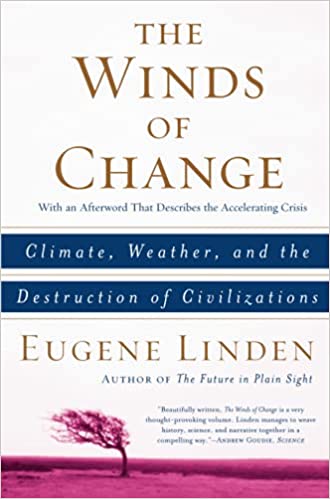
Intro-Why you should read it
Eugene Linden provides a glimpse into some of the most exciting research going on in the science of global warming.
Summary-What this book is about
Linden weaves a tale that is gripping, harrowing, and at times funny, providing a scientific narrative to accompany the basic science of climate change.
He tackles some of the biggest questions currently facing society: How and why do things change? Why are we so afraid of an uncertain future?
Key Takeaways
- Climate can nurture or ruin civilizations.
- This book provides readers with a key background to climate change and its future implications.
- The Winds of Change is a wake-up call to everyone to heed climate change warnings.
Braiding Sweetgrass: Indigenous Wisdom, Scientific Knowledge, And The Teachings of Plants by Robin Kimmerer
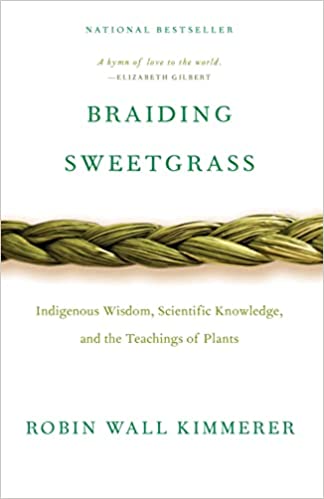
Intro-Why you should read it
Braiding Sweetgrass features a beautiful writing style that will open your eyes and heart to the natural world.
Kimmerer’s stories are joyful, honest, and moving.
Summary-What this book is about
Robin Kimmerer shares her own research on the relationships between indigenous and scientific knowledge by weaving together science, cultural anthropology, and the natural world.
Key Takeaways
- In Braiding Sweetgrass, Robin Kimmerer shares her love of the natural world and its beauty through personal stories from her life.
- This book provides a sense of awe and wonders for the mysterious beauty of nature and its gifts.
Choked: The Age of Air Pollution And The Fight For A Cleaner Future by Beth Gardiner
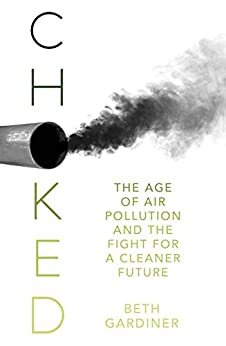
Intro-Why you should read it
Beth Gardiner has written a startling and informative look at how pollution is changing our environment.
Summary-What this book is about
Gardiner’s book discusses the pressure in Washington to regulate pollution.
Choked is your guide on this journey to a healthier and more sustainable life.
Key Takeaways
- Air pollution may cause premature birth, several types of cancer, strokes, dementia, and heart attacks, among other ailments.
- This book is a wake-up call to people about (air or plastic) pollution, which is a global problem today.
Falter: Has The Human Game Begun To Play Itself Out? By Bill McKibben

Intro-Why you should read it
Falter is a study of how climate change threatens our lives, our economies, and our future.
Bill McKibben draws upon a lifetime of experience both as an environmentalist and as a journalist to open our eyes to the threats of climate change.
Summary-What this book is about
The author brilliantly shows that we are entering new territory with climate change.
He does so in plain language for anyone who wants to understand how we got here and what needs to be done about it.
Key Takeaways
- The recent technological trends, such as robotics and artificial intelligence, threaten human control of the vital aspects of our environment.
- This book contains intriguing information about climate change but lacks recent insights into the subject.
- We have a collective responsibility to save humanity and our planet.
Inconspicuous Consumption: The Environmental Impact You Don’t Know You Have by Tatiana Schlossberg

Intro-Why you should read it
Inconspicuous Consumption explores the environmental impacts of products and services.
Summary-What this book is about
In this groundbreaking book, Tatiana Schlossberg proves that even the smallest incremental changes add up to have large environmental consequences.
She further reveals that there has never been a time in history when our choices as consumers were more important to society than they are today.
Key Takeaways
- We should come together to fight environmental pollution.
- The choices we make in technology, fashion, food, and fuel- may have adverse effects on others miles away.
- This book is perfect for beginners, but graduate students will find it lacking in insights into the topic of pollution.
No One Is Too Small To Make A Difference BY Greta Thunberg
Intro-Why you should read it
This book will give you the tools and inspiration you need to fight climate change.
Summary-What this book is about
No One Is Too Small To Make A Difference explores the work of a young climate activist, Greta Thunberg.
She shares how she turned from an anxious student who was overwhelmed by the threat of climate change into a determined activist who inspired world leaders as well as her peers to take action.
Key Takeaways
- We should fight for our planet regardless of the power we have.
- We should check on our carbon footprint as one of the ways to prevent our planet from becoming uninhabitable in the future.
- We can draw from Greta Thunberg’s bravery in fighting global warming.
Sustainability Made Simple: Small Changes For Big Impact by Rosaly Byrd And Lauren Demates

Intro-Why you should read it
This book is perfect for you if you are interested in environmental studies, especially sustainability, but don’t know where to start.
Summary-What this book is about
Sustainability Made Simple will show you how a few small changes can impact your life.
The author discusses the effects of climate change and how to reduce carbon emissions.
This book isn’t just for students studying environmental science- it’s for anyone who wants to do their part to save the planet.
Key Takeaways
- This book gives a detailed overview of how air pollution, deforestation, climate change, and water pollution affect the sustainable living.
- Sustainable life improves our health. We don’t need expensive life changes to achieve sustainability.
There Is No Planet B: A Handbook For The Make Or Break Years by Mike Berners-Lee
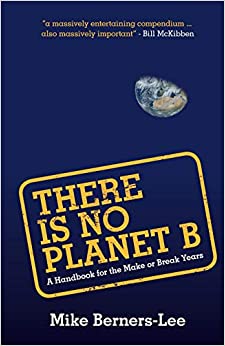
Intro-Why you should read it
Poignant, provocative, and potentially transformative, There Is No Planet B is a wake-up call to anyone who feels that the problem of climate change is too big to solve.
Summary-What this book is about
This inspiring and bold book tackles threats to climate change, inequality, poverty, prejudice, and violence.
There is No Planet B is a vital book for students who want to find out how they can help build a better future.
Key Takeaways
- We should make the world a better home for us and future generations by taking control of our actions.
- We should reduce emissions and promote public awareness of environmental conservation.
- This book journeys into human activity and its effects on nature.
Are We Smart Enough to Know How Smart Animals Are? By Frans de Waal

Intro-Why you should read it
Frans de Waal’s book is a collection of the latest scientific observations about animal cognition and behavior.
Summary-What this book is about
Are We Smart Enough to Know How Smart Animals Are? is a fascinating and accessible book that takes a new look at animals.
This isn’t a book of fables or anecdotes but an up-to-date synthesis of scientific theory, research, and theory grounded in research.
The book places tools of advanced reasoning in the hands of students as they come to understand complexities of the animal world.
Key Takeaways
- Are We Smart Enough to Know How Smart Animals Are? not only teaches you what you need to know about cognitive biology–it will change the way you see the world, change the way you see yourself, and change the way you see your dog.
- Elephants have the ability to identify human beings by language and gender.
Don’t Even Think About It: Why Our Brains Are Wired to Ignore Climate Change by George Marshall
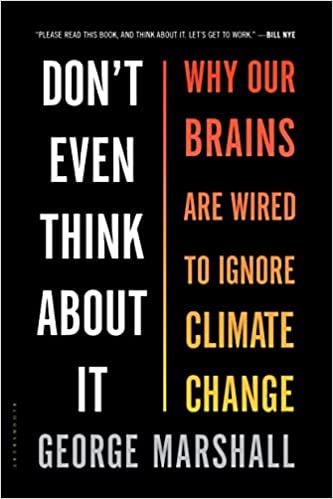
Intro-Why you should read it
Gorge Marshall presents a fascinating read that gives you an in-depth look into human psychology and its influence on climate change.
Summary-What this book is about
With its fascinating insights and powerful scientific underpinnings, this book is a tour of the mind and brain to uncover why we human beings do what we do.
George Marshall explains why it is so difficult for us to get around to doing something about climate change, even though we know that climate change poses the greatest threat our civilization has ever encountered.
Key Takeaways
- This book explores why we don’t change despite knowing what science says.
- Our brains are wired to ignore climate change. Because it seems boring, complicated, and remote, we are currently doing almost nothing to prevent it.
Conclusion
We believe that these environmental science books have the power to help us find solutions to the world’s most pressing environmental problems.
We need all the help we can get to address environmental concerns, including greenhouse gases and rising sea levels -the climate crisis threatening planet earth.
We hope that our list will serve as a starting point for your exploration of the most pressing issues of our day.


